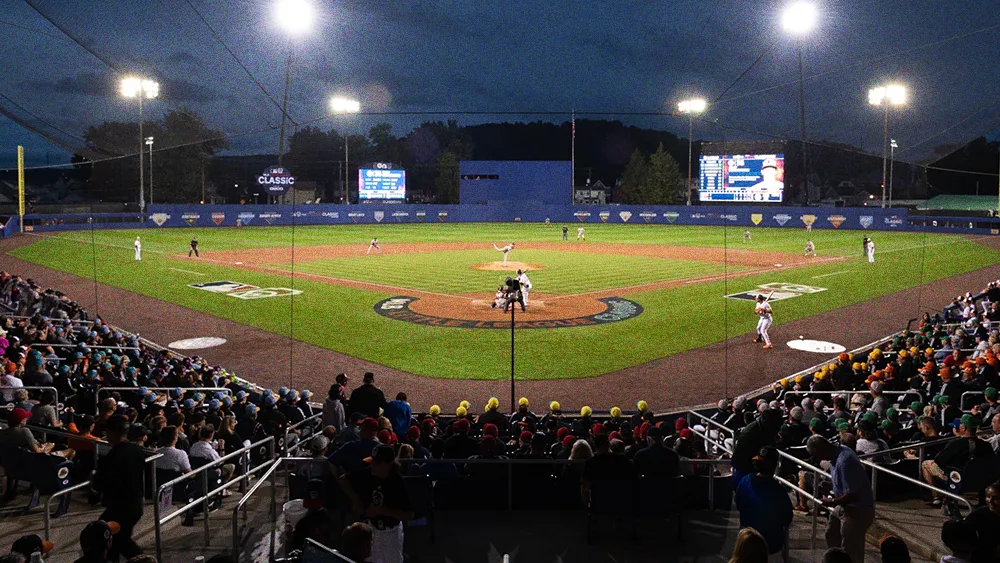The golden age of appointment television is a distant memory. The era when entire nations gathered around the TV set for Friends or Cheers has been replaced by a splintered landscape of on-demand content, where "prime time" is whenever you press play. For brands, this fragmentation has created a defining challenge: in a world of infinite choice, the mass, unified audience has become an endangered species.
As viewers scatter across countless platforms and services, where can a brand still capture a moment of shared, simultaneous attention? The answer, it turns out, has been hiding in plain sight all along, and it's prompting one of the largest advertising sectors to completely rethink its playbook.
Patrick McOwen, Senior Automotive Account Manager at Comcast Advertising and a 30-year veteran of media sales, has navigated the industry's evolution from the peak of broadcast to the rise of streaming. For McOwen, the solution to the problem of scattered attention lies in the one format that still commands a collective audience.
- A captive audience: "The hard part in streaming is getting the simultaneous reach," McOwen said. "And sports is maybe the last format that still will lure the big crowds, all watching a specific piece of content or a game or a match at the same time."
But that valuable territory is now the epicenter of a tectonic shift. The days of finding all sports on a few broadcast networks are over. For consumers, it’s a “confusing and frustrating” experience of hunting down their favorite teams across a dizzying array of apps, and advertisers share that frustration. Reaching a complete NFL audience now requires deals not just with NBC, CBS, and Fox, but also with Amazon and YouTube.
- Full court press: This fragmentation has ignited a gold rush among tech’s "powerhouse entities," who see live sports as the ultimate key to growth. "These big streaming services realize one of the biggest drivers and growth of their eventual success will be the sports rights," McOwen explained. "It's going to be very tough for the traditional incumbents to compete as they once did when they're going against the war chest of an Amazon and an Apple and a YouTube."
As the battle for mass reach intensifies, a smarter strategy is emerging, one that prioritizes relevance over sheer size. The goal is no longer just finding the biggest audience, but the most appropriate one. "With the less popular or niche sports, streaming is able to focus on hitting the right audience, not just always the largest one," McOwen noted.
- Surgical precision: He pointed to the Little League World Series as a prime example. A local car dealer can tap into the national broadcast but use streaming’s geotargeting to deliver their message with surgical precision. "A lot of these local car dealerships are usually the people that sponsor their local community Little League team," McOwen said. "To be able to put them in environments like the Little League World Series and go into the 20 mile radius of their dealership is something that's really valuable. It's got a lot of brand synergy."
This approach extends to ascendant sports that are capturing the cultural zeitgeist, from ESPN's deal with Pickleball to the "phenomenon" of Caitlin Clark and the WNBA, where advertisers are flocking to "align their brands in that atmosphere."
- Closing the loop: For decades, automotive advertising has operated on a three-tier system: Tier 1 (the national brand), Tier 2 (regional dealer groups), and Tier 3 (the local dealership). The challenge has always been bridging the gap between a national TV ad and a sale at a local showroom. Now, streaming technology is finally solving that puzzle. "Streaming's advanced data allows them to compete directly with digital and online," McOwen said. "For the first time, they can connect ad exposure to real business outcomes like web visits and sales, and truly prove the return on advertising spend at a granular level."
The precision replaces the inefficient old model of "casting out this huge net," a critical shift when "at any given time maybe only 5% of the people are in the market for a new car." The new imperative is simple: "connect with the right customer at the right time." This evolution isn’t happening in a vacuum. Because automotive is one of the largest and most performance-driven ad verticals, its demands carry immense weight. "The rise of digital has forced television and streaming to become more like digital," McOwen explained. As a result, measurable attribution—tracking if a viewer visits a dealer's website after seeing an ad—is now "table stakes" for securing their ad dollars. This is often achieved through trusted data-sharing partnerships, a trend exemplified by the collaboration between Comcast's Effectv and Clarivoy aimed at transforming TV attribution for auto advertisers.
- Pure attention: Beyond the data, however, the ultimate prize is capturing something far more valuable: the viewer's focus. "The streaming sports viewer is more valuable to these brands because when you're in sports, you're getting that pure attention, and attention is becoming even more important than reach in some cases," McOwen argued. "With sports, it's that leaned-in, engaged viewer, not just the person half paying attention."
That engagement is powerful because it taps into a fundamental human need for connection. "So much of the world we live in now is people on their phone or individually siloed," McOwen said. "Advertising in sports is one of the few final frontiers where you're bringing people together in communal experiences."
- A priceless connection: For a local dealer who can now afford to advertise within these iconic moments, tapping into that shared experience creates an effect that can't be measured in clicks alone. "The positive impact that these live sports impressions can give to that local store's brand, reputation, their perception and success. To me it's priceless." It's an investment that ultimately builds stronger customer relationships and lasting brand loyalty.

